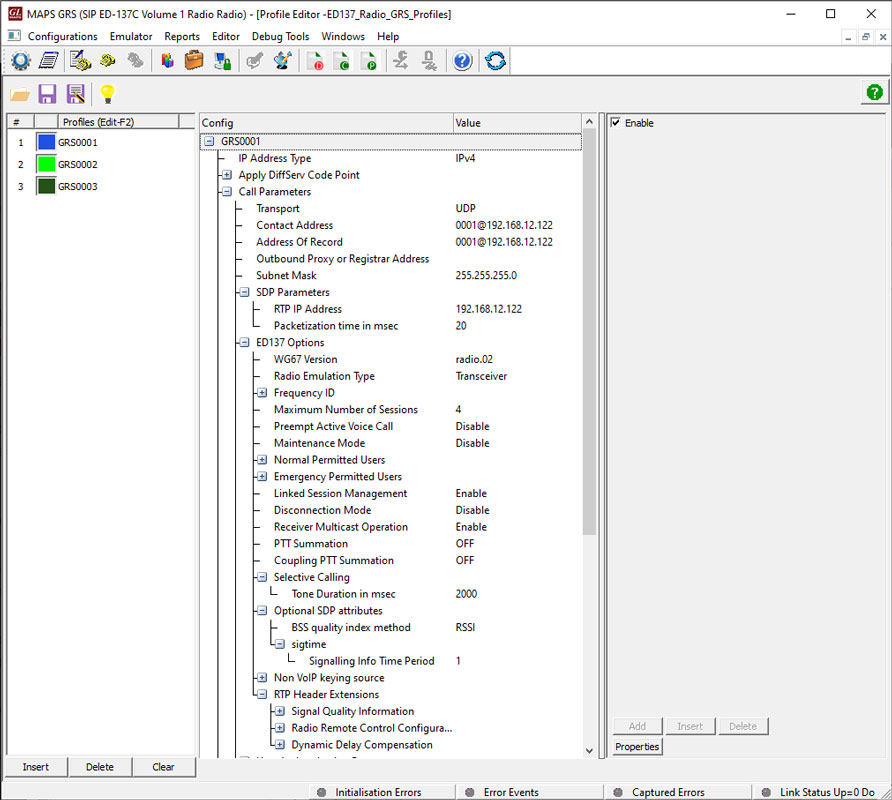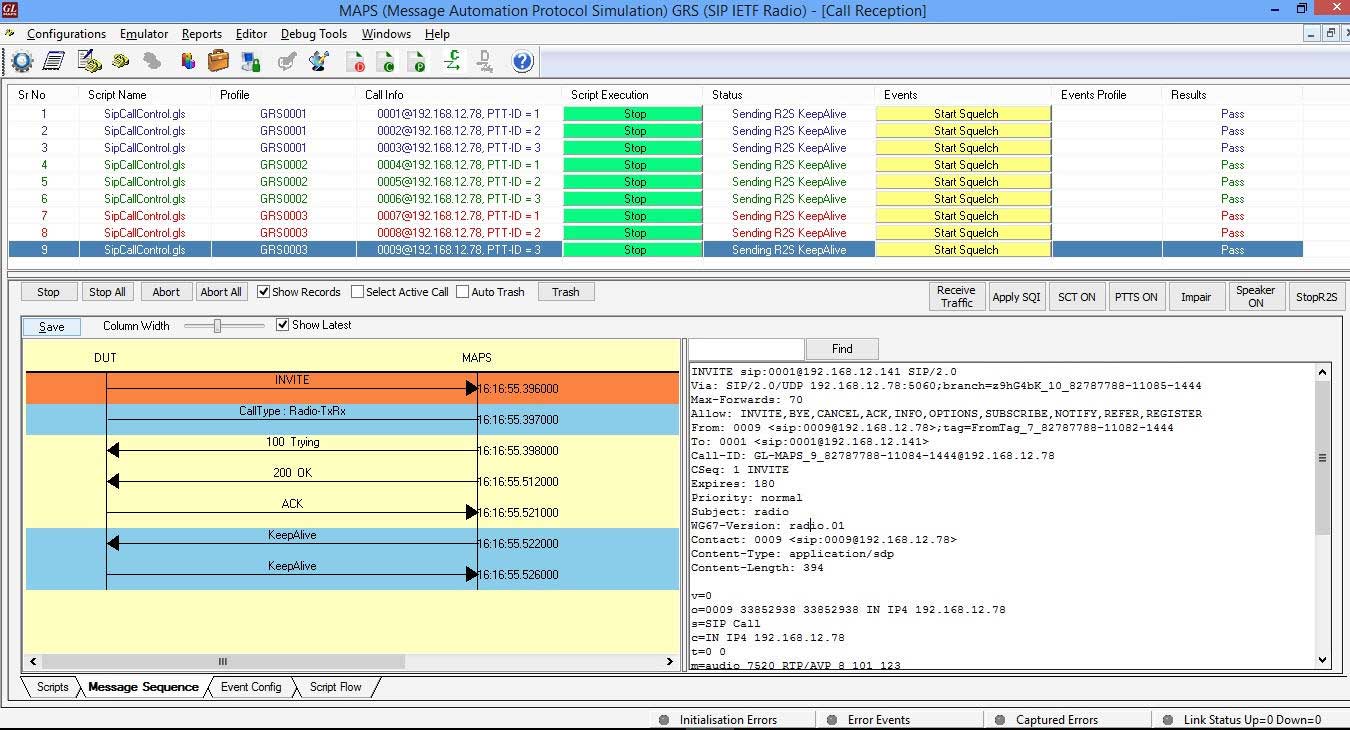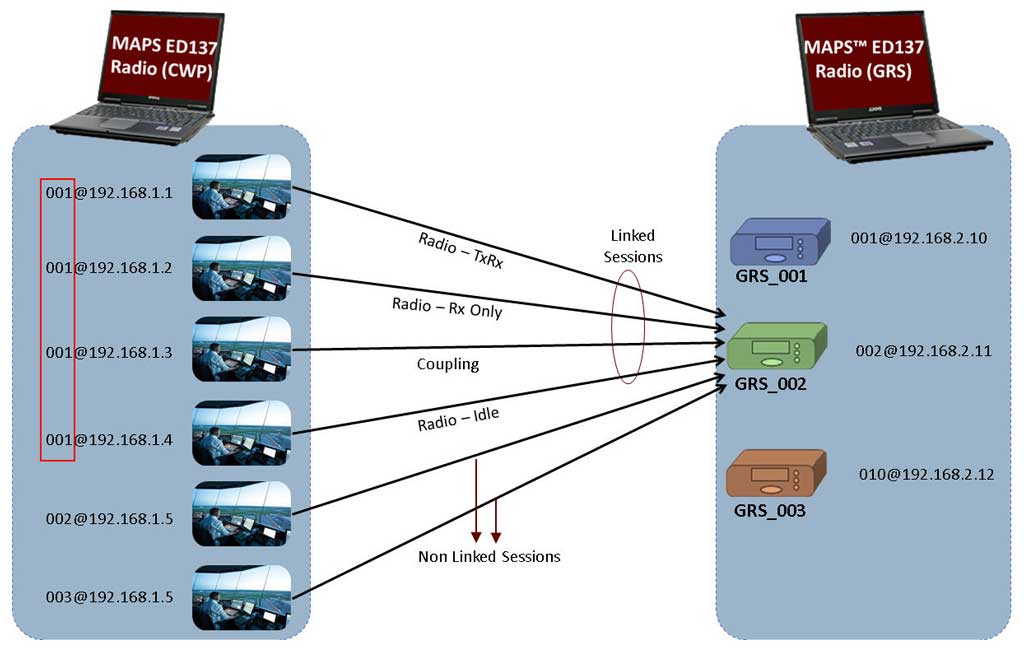GL Enhances ED-137 Radio Emulator
Welcome to another February, 2017 issue of GL Communications' Newsletter providing information and insight into our latest enhancements for the MAPS™ ED-137 Radio Emulator.
Overview
Air Traffic Control is migrating to VoIP architecture and away from an outdated analog infrastructure. Among many other solutions for testing this new Air Traffic Control (ATC) network, GL offers MAPS™ ED-137 Radio, to simulate VoIP Air-Ground calls (as per EUROCAE ED137_1B: Radio) and MAPS™ ED-137 Telephone to simulate VoIP Ground-Ground calls (as per EUROCAE ED137_2B: Telephone).
The latest release adds important new enhancements to MAPS™ ED-137 Radio Emulator. These include:
- Multiple Radio Simulation supports multiple radios within a single instance of MAPS™ ED-137 software
- IP Address Spoofing simulates multiple CWPs/Radios with a unique IP address
- Linked Session Management provides higher service availability and handles redundant connections to Radio
- Support for new user-events that can be applied dynamically on anestablished call (Re-Invite, PTT Priority, Signal Quality Information (SQI), and Receive Traffic option)
Software provides complete control over call scenarios testing, and the ability to customize the network parameters for signaling and VoIP traffic. It has the capability of generating more than 500 simultaneous calls on a core i7 system.
Brief Description of the Enhanced Features
Multiple Radio Simulator - Working
Enhanced MAPS™ ED-137 Radio allows a user to simulate multiple Radios in a single instance of MAPS™, up to 200 Radios (with unique IP addresses) in one system with each simulated Radio having its own set of parameters defined in XML based configuration files. Each simulated Radio is a logically separated Radio with similar capabilities.
Configuration of Radio Profiles
ED137_Radio_GRS_Profiles is an XML configuration file that includes a set of multiple sub-profiles. These files allow configuring multiple radios with unique set of parameters for each radio such as Contact address, Address of Record, RTP IP Address, Radio type, Frequency-ID, and Permitted user list.

Configuration of Radio Profiles
Colour codes are used to sort and group all related calls and make it easier to visually distinguish calls belonging to a particular Radio.

MAPS™ ED-137 GRS Receiving Calls on Multiple Radios
IP Spoofing
The IP spoofing feature allows multiple CWPs/Radios to be simulated using unique IP address from a single system. User-specified IP addresses in Profile will be created as virtual IP addresses on the NIC interface used by the system.
Linked Session Management
The Linked Session functionality provides the Ground Radio Station (GRS) endpoint, an opportunity to detect SIP sessions which are coming from the same user but from different equipment (i.e. different IP Address) to guarantee higher service availability.
So, GRS can identify the calls coming with same user part in ‘From Address’ but with different IP/host address and with 'ls-pl' SDP parameter included. It treats the linked sessions as one single logical session to radio.
The linked session functionality enables the GRS endpoint to support handling of redundant connections between VCS endpoint and GRS endpoint for all types of connections.
Additional Events Supported
Many events can be applied on an ongoing call either from MAPS™ CWP or while receiving the calls at MAPS™ GRS.
Supported Events includes the following:
- Apply CLD - Transmits CLIMAX Time Delay to a Transmitter/Transceiver in milliseconds. The transmitter must delay the voice transmission by specified delay in CLD.
- ReInvite - Sends a Re-Invite from CWP to update an active SIP session. For example, updating a Radio-Idle call to Radio-TxRx by sending a Re-INVITE on the call.
- Receive Traffic - Receives traffic (i.e. record to file, detect digits/tones) on an active call
- Apply RRC - Sends Radio Remote Control information to RRCE (Radio Remote Control Equipment) or Radio Gateway
- Impair - Impairs outgoing RTP traffic by applying packet loss/ delay
- Speaker ON - Plays back the call on the PC speaker. If a Normal PTT is being played to speaker and if we receive a priority/emergency PTT, then automatically priority/emergency PTT will be played to speaker.
- Apply SQI - Sends user defined Signal Quality Information (SQI) to CWP whenever Squelch is active on the call.



 Back to Newsletter Index Page
Back to Newsletter Index Page